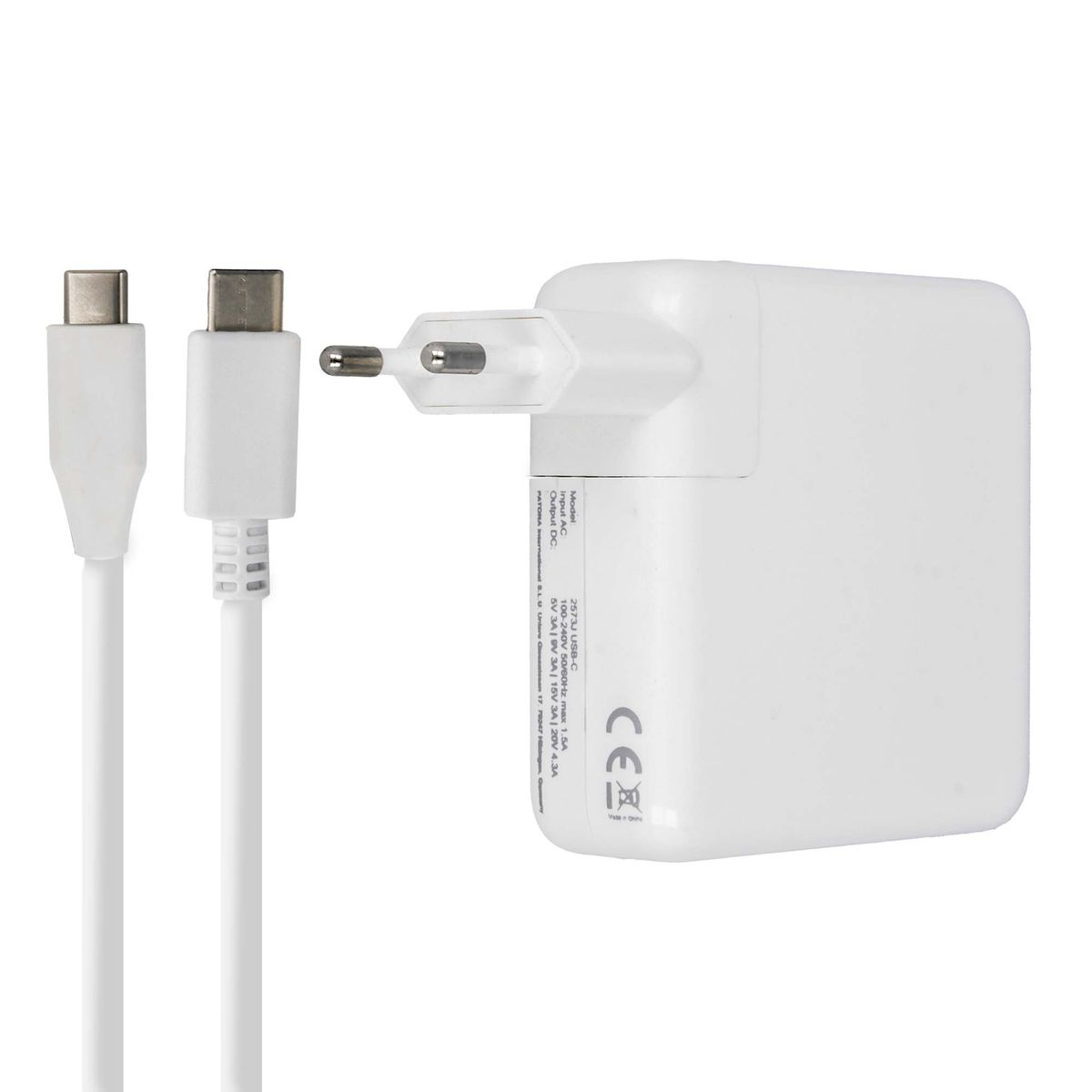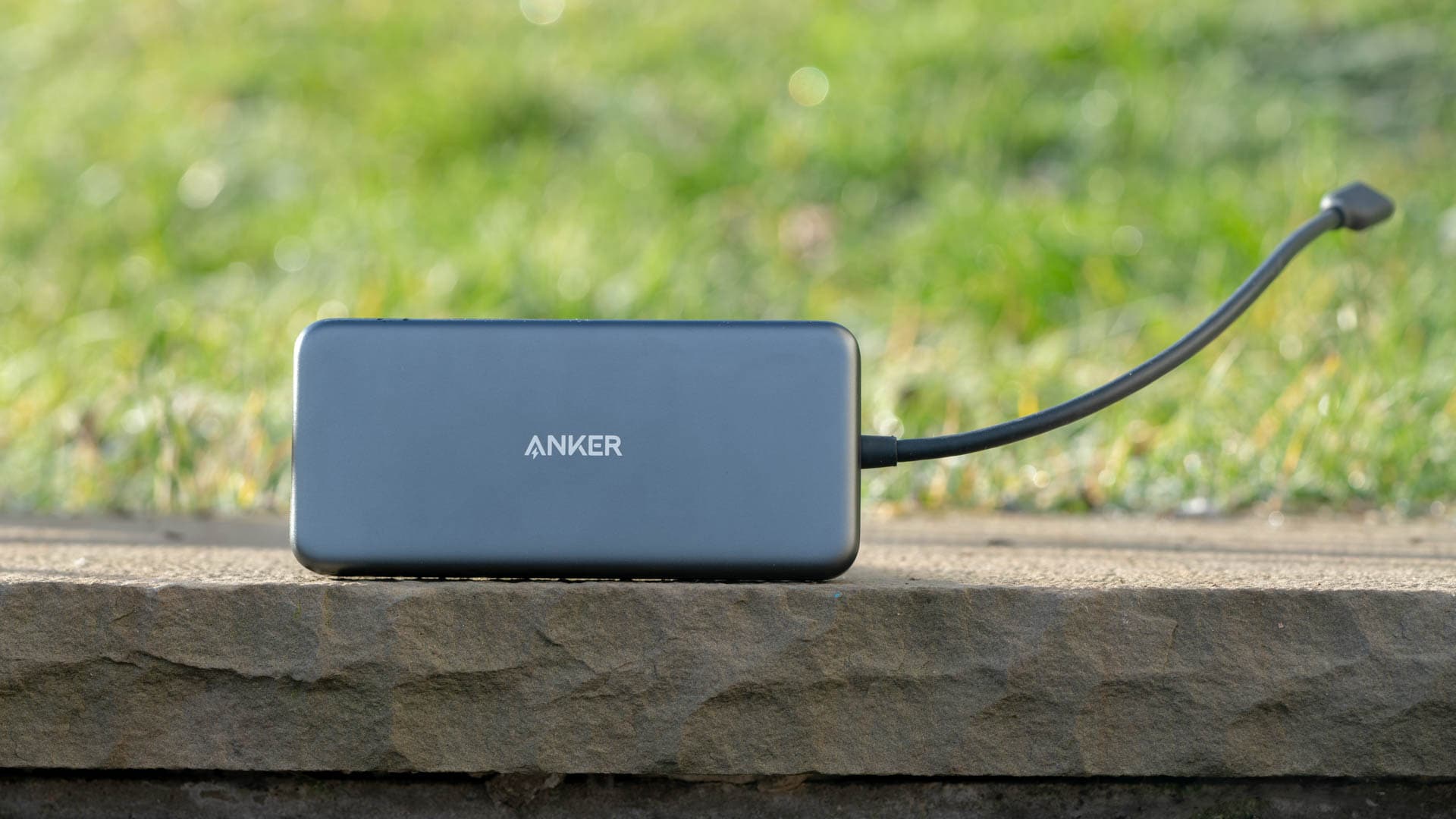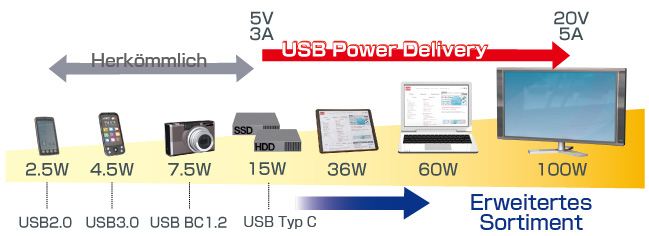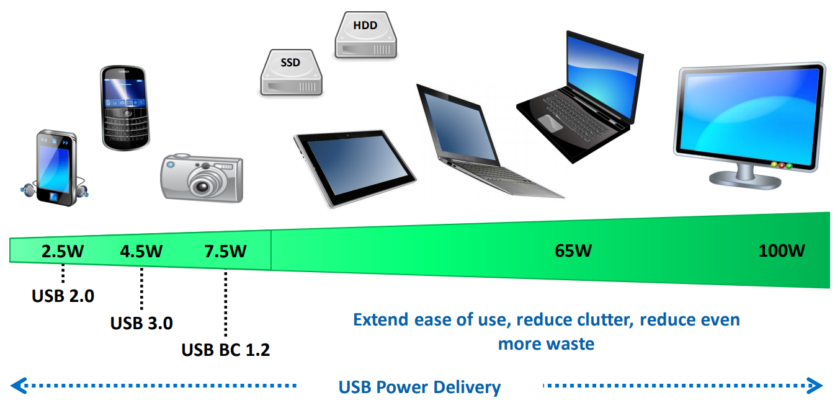Introduction to USB Power Delivery

0 and it significantly deviated from the sanctions of USB 2. Otherwise you may get stuck with a slower than expected charge rate. Power management in these initial generations was not intended for battery charging. The conditions under which the power supplied by external devices is used to power the camera or charge the battery are shown below. Power Delivery is designed to co-exist with standard USB Battery Charging implementations. So, for example, as long as one port on the charger can maintain 30 W, charger packaging can claim a PDP of 30 W. 5 W , along with other benefits:• There is also an interoperability test suite as well as several tests specifically for power sources. Does it seem like you are not getting the amount of charge you need from these ports? This emphasis on branding has become of particular import in the wake of the launch of USB 3. Based on the final profile selected, the power transfer is 18, 36, 60, or 100 W. This makes possible simultaneous data transfer and power flow. Flexible and Highly Integrated Architecture and Software• This older technology is less suited to handle this increased wattage and may not have the ability to monitor heat and circuitry abnormalities. But because the branding is optional, the absence of the logos and stamps does not necessarily mean that a product has not passed certification. Enables new higher power use cases such as USB bus powered Hard Disk Drives HDDs and printers. Establishing Wireless Connections to Computers or Smart Devices• Power management is at the center of enabling the continued integration of electronics in our lives. However, due to the lack of a specification, interoperability was a major issue for first-generation USB battery chargers. An easy way to do this is to click on the Description label to sort the devices by description. The battery-charging spec went on to define more power sources than what was recommended above: 1. 1 Gen 1 are synonymous," a USB-IF representative told Tom's Hardware. Fast Role Swap FRS Hub: This new PD 3. Using Windows You can check the power capabilities of the USB ports using the device manager in Windows. When using a hardware device, make sure that it has the connections you will use. 1: There's a Gen1 and a Gen2, and they offer different data transfer speeds. Its purpose was solely to enable peripherals to power up. 4 adapter supports UHD resolutions up to 7680x4320, and also features HBR3 functionality, providing a bandwidth of up to 32. The adapter features USB Power Delivery so you can power and charge your devices while outputting Ultra HD video. 0 depending on the specification implemented. You can refer to it as a handshake. USB has always been positioned as an external bus for fast data communications, and has evolved in this way over the years. Second, what exactly does "alt mode" do to the other functionality? Despite there being no such guidelines in the specifications, designers figured out ways to use USB for battery charging. The USB-C Power Delivery protocol is a specification that allows for more flexible and faster charging of devices. Theoretically, one could route just about any protocol through USB Type-C. 0 specification and the latest 3. With this spec, the USB-IF blessed battery charging as a legitimate application for USB. Say, for example, a phone is charging through a USB connection to a PC. It is a portable program, and you do not have to install anything on your computer. In fact, the first time a specification was made specifically for power delivery occurred only a few years ago in 2010: The Battery Charging Specification — BC 1. This new USB power delivery specification allows power transfers of up to 100 W, along with other features and benefits. In order to clarify which is which and what is what, the USB-IF has turned to branding. For example, Cypress offers the CCG1 programmable USB Type-C and Power Delivery controller. 1 Rev2 10 Gbps is called "SuperSpeed USB 10 Gbps. 0 offers an extended payload size for larger data transfers with packets of up to 260 bytes. 0 Engineering Change Notices ECNs. Finally, all support power delivery which can be identified by a lightning symbol next to the port. 0 feature specifically targets USB hubs and docking stations. Cabled Connections to Computers and HDMI Devices• What happens if you plug a power-only USB cable into a USB PD power supply, and then into a low voltage device like a mobile phone 5V? You could use your phone to power a hard drive over the same port used for charging, for example. Second -- Confusion is going to be rampant, yes. What if a peripheral requires a non-USB signal? What's in the Box 1 - Included in Package USB-C to DisplayPort Adapter To arrange extended displays on Windows 10, complete the following. Please send your questions regarding Power Delivery to. 1, and they require USB PD to operate. Recommendations for which adopters agreements are appropriate to execute are listed below. Replacing Type-A and Type-B connectors with a single connector Type-C that supports bidirectional power flow. Sources supplying more than 15 watts offer voltages of 5 and 9 volts, those supplying more than 27 watts offer 5, 9 and 15 volts, and those supplying more than 45 watts offer 5, 9, 15 and 20 volts. For example, headsets can draw less power than external HDDs. Controllers are also taking advantage of the reduced footprint enabled by the Type-C connector. Today many devices charge or get their power from USB ports contained in laptops, cars, aircraft or even wall sockets. 1-labeled cable will support both generations of USB 3. Click on the one you want to check to highlight it. A closer look at the specification One of the primary motivations behind the development of USB Power Delivery was to produce a single charging standard that could be used across all USB devices. According to the USB-IF's documents, these changes include "added performance boosts to meet requirements for USB storage, display and docking applications," as well as USB 3. 1 charging standards at up to 3 amps. 0 There are a number of significant differences between the PD 2. The key here is that this FRS capability is relevant only for Dual-Role Power DRP ports that can alternate between sink and source roles. Together, this leads to a simplified implementation of USB with low-cost power delivery up to 100 W. That's all well and good, but it creates a problem for consumers who then cannot tell, at a glance, what a given USB port can or can't do. In the end, the power bank receives feedback from the device, the corresponding voltage will be output. Essentially, everything but cables must be subjected to the Type-C test suite for compliance purposes. Fortunately, there should be some Type-C hubs landing on the market sometime in the not-too-distant future. This increases to 900 mA with a USB 3. Standard downstream port SDP : power source compliant with USB 2. At left, an example of an Assured-Capacity Charger with a total capacity of 60 W and a USB Charger certification of 30 W. You can use the built-in capabilities of Windows, a third-party app, or a voltmeter to detect the amount of power available in one of three ways. Ideal for Travel This lightweight display adapter is highly portable, with a small-footprint design. In the here and now, USB Power Delivery is a bonus luxury rather than a major shift in charging capabilities. A 45-watt wall charger will charge all your USB-C PD-enabled devices, but if you are looking to charge a Google Pixel, which will only accept 18-watts of power, your 45-watt charger will only deliver 18-watts. Fixed-voltage chargers are typically unable to charge quickly without generating excessive heat. This was done deliberately to prevent users from connecting host to host leading to the risk of a short circuit. Thus, the PPS approach demands that the sink side be smarter, given that the sink knows how much power it needs. 4 Maximum Cable Distance To Display 6. 1 cm] Material Plastic Cable Length 4. Join this webinar to learn how to Build Better Bluetooth devices with Infineon. Cables including power and charging cables should be placed and routed to avoid creating electric, tripping or safety hazards. 4 cm] Performance Audio Specifications DisplayPort - 7. 1 became common knowledge last year even though it was actually released in 2012 , there was some confusion. Rules are split into four target power categories; 7. Power Delivery starts at the 5V setting and is configurable up to 20V. 1 was released as an Engineering Change Notice ECN to USB 2. 0 described a power source of 5 V 500 mA 2. Another way of thinking of it is that Type-C is the pipe, and USB is one of the things that can flow through the pipe. 2 increased USB power delivery from 4. Shrink your system footprint significantly with the only PD controllers on the market with a 20-V integrated power path. USB Power Delivery offers the following features:• After the charging device receives the signal, it will feedback a set of signals to the power bank if the device needs 5V, it will feedback a 5V signal, and if 9V is required, it will feedback a 9V signal………. 4 Chipset ID Parade PS8468 VIA VL102 Packaging Information Package Height 0. But I foresee many cheap cables that don't implement this properly, and possibly more non-standard standards like the one Apple created. Unlike the two methods listed above that only work on a computer or laptop, you can use a voltmeter to detect the energy capabilities of other devices such as phones, power banks, and car chargers. In some cases, data transfer and power delivery failed to work simultaneously. We will cover our:• Most cables will support no more than 65 W power delivery, while other, thicker cables can handle 100 W. Together, these enable any externally powered peripheral to serve as a power source and hub for any host or devices connected to it. Power will flow from display to laptop and HDD. The next step is that OEMs need to help consumers by using the USB-IF's branding. First -- I don't know about video cards, but monitor support is a must, particularly for power delivery. First, will there exist a Type-C cable that supports ALL the top features? Engineered for safety, efficiency and durability, Belkin cables and chargers are accredited or approved for compatibility by companies such as Apple, Google and the USB-Implementers Forum aka USB-IF. This will group all the USB ports and make them easier to find in the list. The tridents and the battery icons are to be used primarily on devices themselves. " Although many -- possibly, most -- applications of USB Type-C will involve USB one "Gen" or the other , the USB Type-C port design allows for additional features. PDPs are a revamp of Power Profiles that now tell the user what the power supply can deliver in Watts; a higher value means more power. 5-A current can be supplied before enumeration. The USB Power Delivery spec sanctions bidirectional power delivery. Note that other indicators point to a port's support of other protocols -- Alternate Modes or "Alt Modes" -- such as the "DP" that indicates "DisplayPort. The pre-power delivery implantation would be: 1. Once the source reaches predetermined voltage level, the sink re-negotiates by requesting a constant voltage. querySelectorAll "::shadow link, ::shadow style". With a power-delivery spec that allows for a theoretical 100-W max power budget, many of these peripherals can now be powered by USB cables. It seems ludicrous -- but in fact, that terminology was never meant to be marketing terms at all. The user just needs to connect both to the display via a USB connection. With fixed PDOs, the charger advertises its maximum output and the sink side chooses the closest fit. However, this can lead to some issues as certain devices or cables are not compatible with other types of ports. 1 As we mentioned, "USB Type-C" doesn't mean "USB 3. Once you have purchased one, it requires just a simple connection to display the power information for the port. 0 plus all of the changes that have been made to USB 3. When you see the above trident symbols encased in a battery icon, it means that those ports support Power Delivery. No additional power sources required for laptop or HDD. It is true that in order to use the branding, a given product must be certified by the USB-IF, which was a smart move on the group's part. Sources operate in constant-voltage or current-limit modes depending on the load; current-limit mode happens only when the sink attempts to draw more than the negotiated current. t return[];if a t return c t? Normally, each device charged by USB will have their own separate adapter, but not anymore. To enable fast charging via USB-C Power Delivery, you need a wall charger that can deliver enough power measured in watts to your smartphone. A laptop needing 30W of power may request 15V and 2A from its charger. On connection, a USB device was allowed to draw 100-mA current initially while enumerating and negotiating its power budget with the host. Choosing the Right Charger When it comes to selecting the right charging solution for your USB-C device, there are a few things to keep in mind. 0 devices provide a minimum of 500 mA at 5 volts. 0, any USB device could be classified as either low power 5 V 100 mA or high power 5 V 500 mA. USB-C Power Delivery with USB-C charges a Google Pixel 2 or Google Pixel 2 XL up to 50 percent in 37 minutes, when paired with a USB-C to USB-C cable. So now that you know a bit about what the USB Power Delivery standard is, what are some of the big features that make it worthwhile? Since the USB-C connector is reversible, it can be inserted into the port either way without having to flip it around — just like. Charge time varies with environmental factors; actual results will vary. Closing thoughts USB Power Delivery is a useful specification, it enables a wide range of devices to share chargers and even power each other seamlessly. In this manner, the unpowered dock continues to source V bus on its downstream ports while the Fast Role Swap takes place. Just because it includes a USB-C port, does not necessarily mean that port supports Power Delivery and will output 60W on that one port alone. Even to charge or operate devices that demand a lot of power think MacBooks, Switches, GoPros, drones and more. Bluetooth Mesh Enablement with a Live Demo Register now to learn more! Intelligent and flexible system level management of power via optional hub communication with the PC. A new version of the USB spec puts additional demands on testing regimes that wring out power-handling options. It allows for autonomous device operation when no System Policy Managers are present, or slave operation when a USB Host Controller is the System Policy Manager. Type-C is going to be lots of fun when you end up needing a dozen different Type-C cables because each supports different options. 1 release, the USB Implementers Forum USB-IF released the USB Power Delivery Specification. 0 which in turn is faster than 2. Connect the display to a power source. Consequently, these peripherals required independent power sources at an additional cost. 5 to 100 W: Not all peripherals could be powered by a USB cable as long as the maximum power was capped at 7. Using a standard USB-C cable, it can handle up to 60 W and will go up to 100 W using a full-featured USB Type-C ECMA cable. For starters, there is USB Power Delivery, which is a feature that allows devices to deliver up to 100 W of power through a USB port. 1 that require clarification, USB Type-C is a much more flexible connector pun not intended than older USB standards, and USB PD is another wildcard; in other words, the mere presence of a Type-C port on a device tells you little about what that particular port can do. However, some larger peripherals e. Applications• EN-EL15c and EN-EL15b batteries inserted in the camera will charge when the camera is connected to a charging AC adapter available separately for the Z 6II, supplied with the Z 7II or via USB to a computer. Allowing low-power devices to negotiate only the power that they require. USB Type-C Does More Than USB 3. Power flows only from laptop to HDD or display. USB-C circuit boards are specially designed to carry this increased wattage without being damaged or overheating, for enhanced safety to users and their devices. Power management across peripherals: The power-delivery spec helps to optimize power flow across multiple peripherals by:• Connect a power source to all three system components—HDD, display, and laptop. I think the USB-IF should have required the logos on any device utilizing the Type-C connector, not just for product packaging. It operates by facilitating a conversation between two devices to negotiate a power contract so they can determine how much power can be pulled from the charger. One helpful factoid is that any USB 3. 1 Rev1 5 Gbps is called "SuperSpeed USB," and USB 3. When you take Thunderbolt into the equation, things will get a little more complicated, though. 1 Gen 2 10Gbps Type-C that also has Power Delivery of up to 100W, but we ain't gon' mention it. Fast charging is a convenient way to keep your phone topped up throughout the day, but it comes in a variety of flavours. Not all OEMs correctly labeled the CDP and SDP. Ultimate accessory for early adopters of 8K technology• 1 gen2 and not just superspeed for usb 3. For power delivery to devices, the key characteristics include a fixed-voltage supply, stable current, and the ability to handle dynamic loads. Partially, this is because the USB-IF uses specific branding to clarify which USB 3. Note:• Clicking here will tell you how much energy the port is using. Allows low power cases such as headsets to negotiate for only the power they require. The new USB-IF Type-C standard solves the above problems by:• The specification is rated up to 100 watts, but most smartphone products will use the 10 to 18 watt modes. Cables will need be USB-IF-certified. To figure out how much power to transfer to any device, the source and host need to be able to communicate their requirements. For decades, TI has been at the forefront of developing new process, packaging and circuit-design technologies to deliver the best power devices for your design. Extract the files and run the application file. Basic Photography and Playback• Initially, these larger packets were added to allow firmware updates delivered over the PD channel, but their usage was extended into arenas such as security authentication , battery information, and other data. 5 A compared to traditional USB. Yet, somebody gets paid to come up with this. 0 waiting in the wings for later in 2019. In our series, we break down complex terminology, take a look at emerging power trends, and shed light on the technology that goes into making our portable power, solar, and lighting solutions. Ultra-Low Power Consumption• Double-click on the Universal Serial Bus controllers branch to expand it. Type-A and Type-B connectors are similar electrically, but different mechanically. 1 specification absorbed USB 3. Limitations of USB Type-A and Type-B current USB-IF standard : The USB receptacle on a USB host or USB hub is a Type-A connector. This is a powerful feature if you'll excuse the pun , because it means that you could, for example, connect your laptop or phone to your monitor using a Type-C port and cable, which would send audio and video to a monitor, and the monitor could simultaneously charge your laptop as long as all connected devices support USB PD. Option selected for [ USB power delivery] Camera External power source used for [ Enable] On 1 Power delivery Off Charging 2 [ Disable] On 1 — Off Charging 2• Likewise, the sink can request source current limits in 50-mA steps. This basically means that:• Qualcomm has its Quick Charge technology in a number of handsets. Power direction is no longer fixed. Therefore, when you see that branding, you can rest assured that it has passed the USB-IF's hundreds of tests. Just getting some clarifying information out there so consumers will be more informed. There is a wide selection of voltmeters available for low prices, and they come with a variety of features. 1 gen1 is the same 5gb speed as usb 3. Enable the highest power density from 15 W to 100 W with our USB Type-C TM and USB Power Delivery PD portfolio. In the same way, the weakest link theory for USB link speed negotiation will yield various actually connections, despite specs of individual components. It's fine if engineers use the term internally, but for marketing that's just asking for trouble. In addition to faster charging, this USB standard enables both host and peripheral devices to provide power. There is further clarification needed around other aspects of USB 3. Hence, if your laptop came with or uses a charger with that kind of a connector you already have a winner. Which port to use? 1 Gen1 are actually the same thing -- almost. USB-C maximum charging rate without power delivery would be 15W. Scroll over until you find the column heading that says power. They are not very expensive, so I have several and the connector cover all the USB connectors. We are certainly looking forward to a future where power can be shared. Dumb mothercrackers should be banned from creating standards, from causing the entire planet headaches and some need to pay with their lives for it. Implementers should note that if they include battery charging capability in their devices or support for host adapters such as docks or ACAs they should also reference the. Click on each display to determine what number each display is assigned to. 0 described a power source of 5 V 100 mA 0. USB has become a ubiquitous power socket for many small devices such as cell phones, MP3 players and other hand-held devices. 1 gen1 has but with 10gb speed instead. OEMs can simply decide not to clutter up their sexy product designs with USB information. arguments[3]:[];r this,t ,this. so now you have to look carefully when you buy usb 3. Power flow only unidirectional: Power is limited from host to connected device. Just insert the tester between the power source and the cable and you will be able to see the Voltage and amperage draw, and some other characteristics. I have four questions that I hope you can answer. 0, Micro-USB, and versions just to name a few. However, this specification was only a precursor for what was to come. 6 cm] Shipping Package Weight 0. Other Considerations Taking full advantage of the power-delivery spec involves a few more requirements. Compounding that is the fact that there are speed differences between different types of USB.。 。






